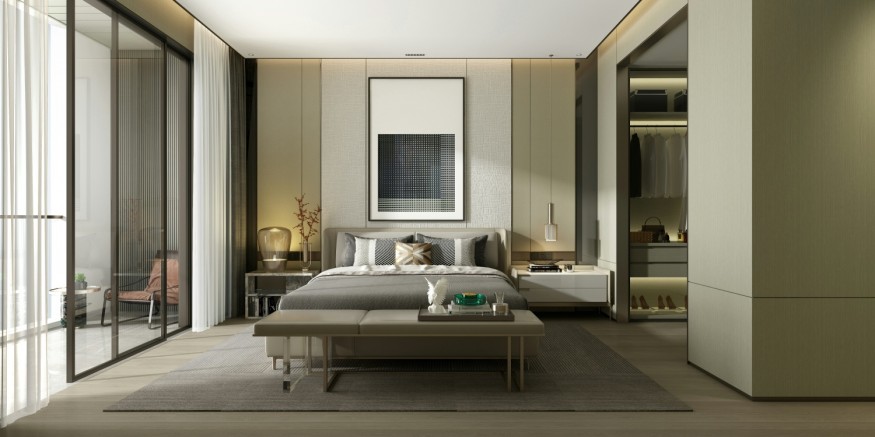5 Essential Factors for Bedroom Layout and Design

Several key factors can significantly impact your bedroom's functionality and aesthetics. Whether you're aiming for a cozy retreat or a stylish sanctuary, considering these elements will help you create a space that meets your needs and reflects your style.
1. Understanding Your Needs and Space
The first step, though, in designing bedrooms is to determine your requirements and evaluate the space you have at your disposal. Start by identifying how you use the bedroom: is it mainly for sleeping or any other activity, or can it contain both sleeping and other activities such as working? Such understanding will inform decisions on the kind of furniture to be placed, storage space, and aesthetic features that should be incorporated.
2. Positioning Your Bed Strategically
The bed is considered the main piece of furniture in a bedroom, and therefore, the position of a bed is critical in the general setting. Place your bed along a long wall to be more balanced and leave more area of the floor empty. Think about how people move around the bed and see that there is enough space for some objects like a bedside table or other essential items like the reading lamp and storage area.
3. Maintaining a Serene Environment
A bedroom should be simple, creating a comfortable and calm environment that enables sleep. Select warmer colors such as sky blue, sea blue, green, beige, and other lighter shades of color to make the atmosphere more encouraging and stress-free. Natural elements should complement the coziness and free breathing of the room: the wooden furniture, the thick rugs, and the breathable fabrics for the beds.
4. Multifunctional Rooms
In smaller homes or multifunctional spaces, bedrooms often serve dual purposes beyond sleeping. Incorporate furniture with built-in storage, such as beds with drawers or ottomans with hidden compartments, to maximize functionality without compromising style. Consider incorporating a small desk or seating area for reading or work, ensuring these elements complement rather than clutter the space.
5. Lighting for Mood and Functionality
Lighting plays a vital role in the ambiance and utility of the bedroom, which is why it is so important. Implement a combination of generalized, operational, and spotlighting illumination to meet various activities and periods. Use dimmers to control the room's lighting intensity, or even have table lamps for bed use with adjustable necks. There should also be optimum utilization of natural lighting during the daytime with options like sheer fabrics for curtains or blinds to maintain privacy while permitting light into the space.
By considering the following factors, you can ensure you get your dream bedroom that serves both function and form: Evaluate your needs and space, the ideal placement of the bed, keeping the bedroom calming, using multifunctional furniture, and adequate lighting. Bedroom design is a challenging process regardless of whether starting with a clean slate or redesigning an existing space; careful planning and a keen eye will help create a functional and visually appealing bedroom suited for the inhabitants' daily lives.
Related Article : 10 Feng Shui Tips for Crafting the Perfect Bedroom Sanctuary














